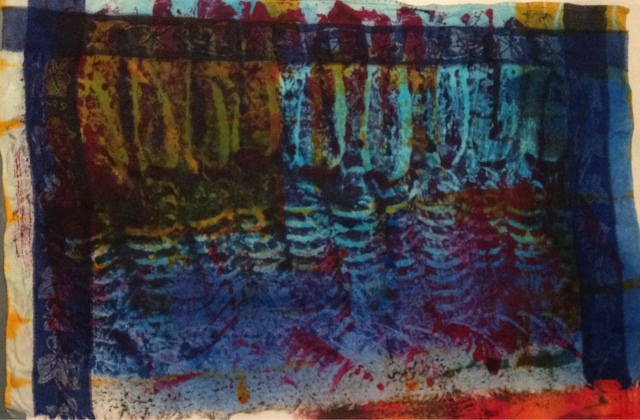 |
| primary couching! |
From mum I get three things that I made for her over time; a needle case I made in primary school, in Petersfield, where we lived before Dad died. This holds my quilting needles, patiently waiting for the next time I have some free time to practice some hand quilting.
Then there is the lace trimmed needle cushion with a heart at its centre, made from a kit in a monthly needlework magazine I bought back in the eighties when such things were all the rage. It sits here with the pin cushion, which may have come from Ganna, or possibly Nanya, I'm not sure how old it is.
 |
| needles and pins cushioned |
The most recent gift was another needle case I made for her from a pattern in Candace Bahouth's Medieval Needlepoint; this tends to hold a mix of mostly big needles, including tapestry needles. I made a similar one for my Aunt Cecil, which she still uses.
 |
| now which one holds the needle I need? |
Many of these things I can remember sitting in the top drawer of Ganna's bookcase, along with the fabric scissors and pinking shears, several yard of bias binding in various colours, wooden cotton reels and a variety of dubious looking things that were of use in repairing fierce elastic undergarments! This bookcase drawer was the designated repository of needlework tools from time immemorial. Such are the elements of family mythologies. When I use them, they include me in this elemental connection; that of mother to daughter through generations, each passing tools to the other, gleaning the good on the way and discarding the worn out, shaped by a deep philosophy of frugality, because of the War; because of the Troubles; because we have all looked after our own in some way or other. In a very female dominated family, each generation from Nanya's mother through to me, have shared a living space when one or another had need of help, and so these things get handed down because house contents blend, rather than the sort of mass sorting and sifting that goes on when one generation downsizes moves into care of some sort, when there has to be a drastic pruning. One makes space both for loved person, and their loved things. I have no idea whose fingers these thimbles have protected in the past, but, when I use them, I know that I share a deep and indelible link, as I too ease the needle through fabric that I stitch.














































